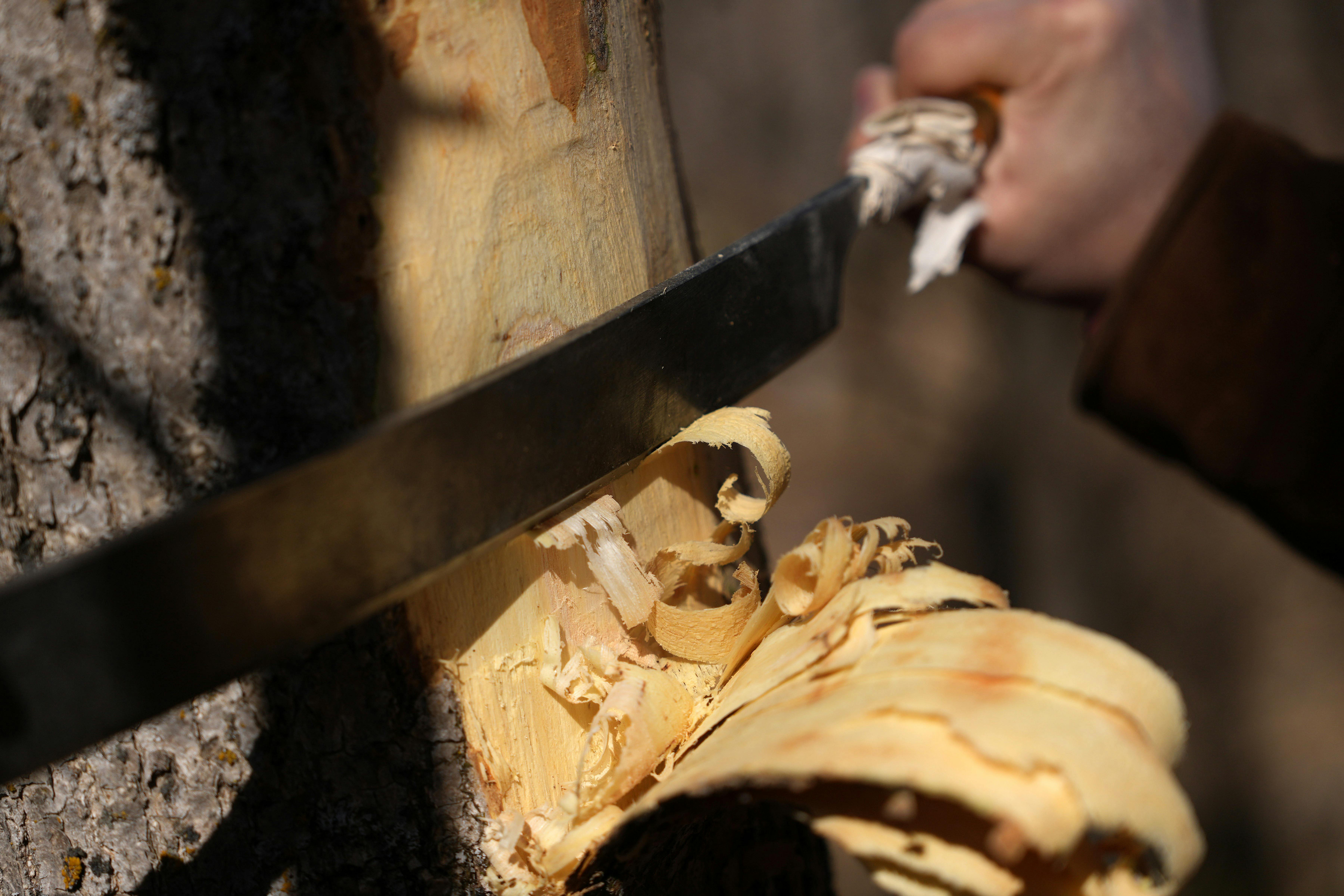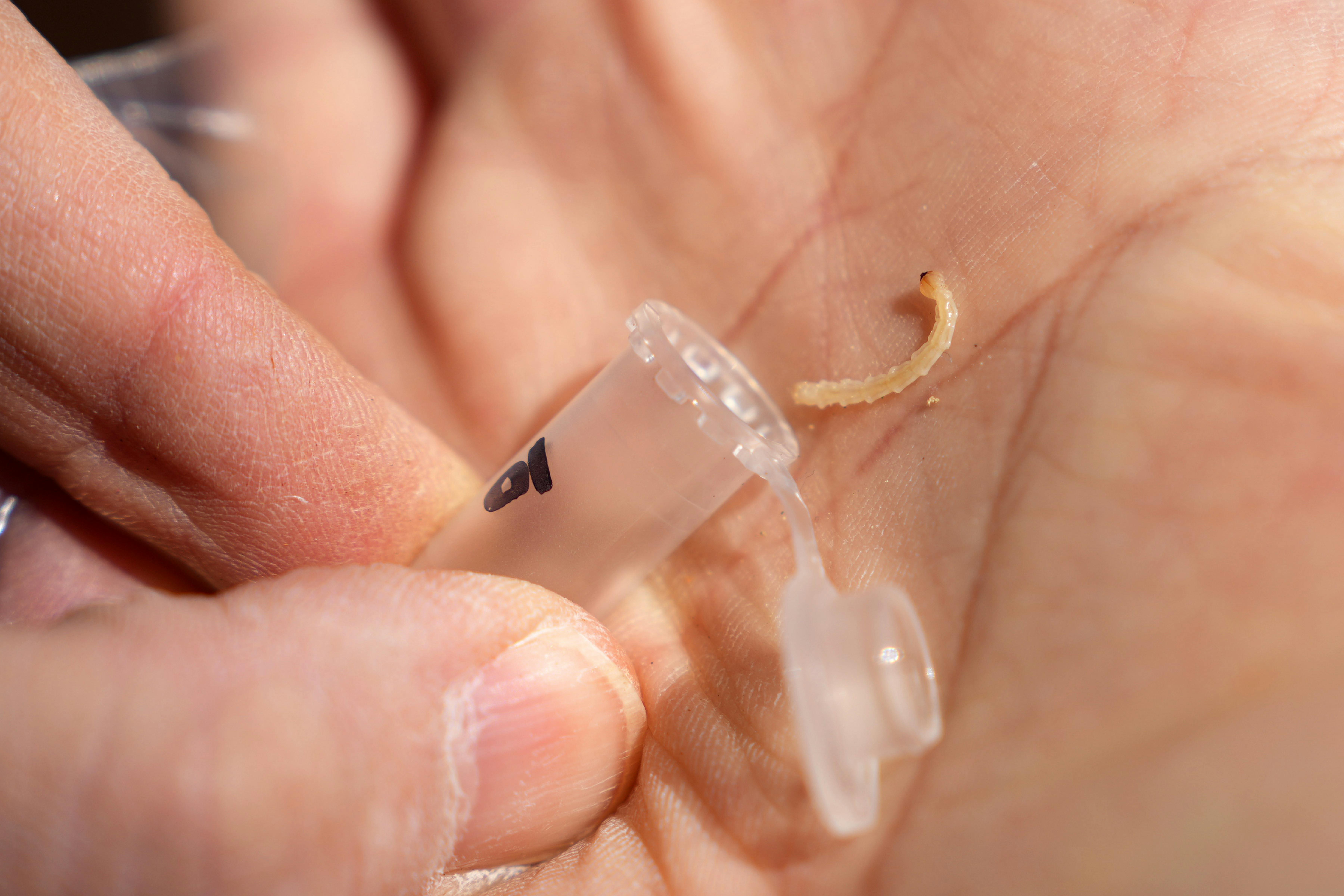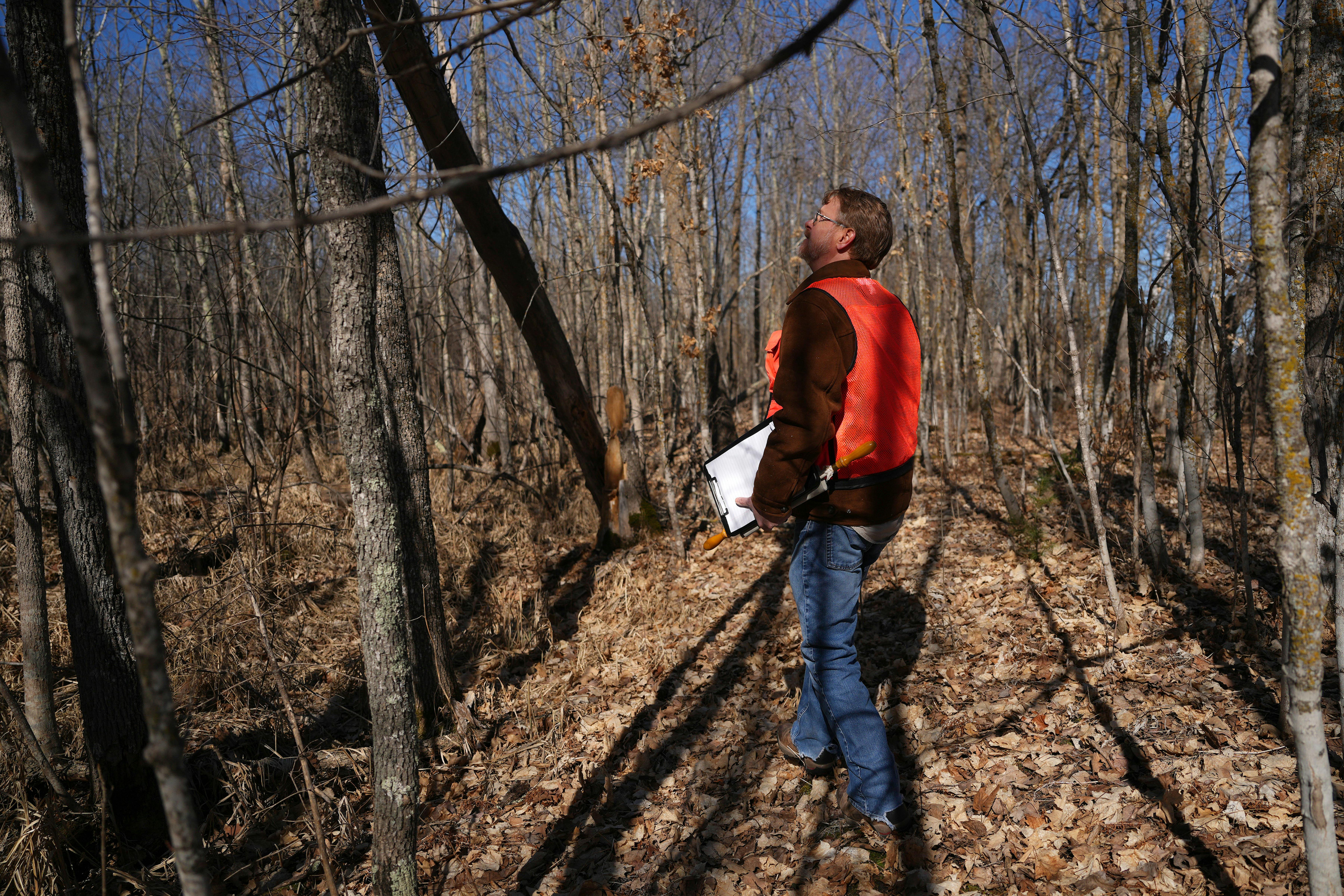REMER, MINN. - Along a lonely stretch of road inside the Chippewa National Forest, a stand of black ash trees is under attack.
Discovered last fall, it signals the farthest and coldest known place a hungry forest menace has come in northern Minnesota. For now the infestation is helping University of Minnesota researchers study the emerald ash borer's ability to adapt to cold — and whether milder winters will hasten its spread into the vast acreage of ash trees so prevalent in the north.
Minnesota has almost a billion ash trees in forests and urban settings, the most of any state. The invasive beetle has been destroying green ash tree canopies across the southern half of the state for 15 years. Minneapolis has condemned about 16,000 trees since its discovery — and another 12,000 infested trees will likely follow in the next five years. Duluth has removed and replaced more than half of its earliest known population of infested ash trees since 2016. The ash borer has been found in 50 of the state's 87 counties, including recent discoveries in Pine and Renville counties.
But the Remer discovery has another distinction: it's the first time the ash borer has been found in one of Minnesota's national forests, 30 miles southwest of Grand Rapids.
"It really signaled to us a new era of change that we are going to experience in our ash forests in northern Minnesota," said Rachael Dube, a regional forest health specialist for the Minnesota Department of Natural Resources.
State and tribal forestry and invasive species experts worry that north-central and northeastern Minnesota will be hardest hit, eventually wiping out hundreds of millions of black ash trees. Black ash trees thrive on wet landscapes and act as straws, drinking up groundwater. Without them, entire ecosystems will be altered as forestland morphs into wetlands, disrupting the habitat of birds and other wildlife the trees support.
Tribes will lose bark for traditional practices like basket-making. Wild rice lakes — both ecologically and culturally critical to Anishinaabe tribes — will be threatened by rising waters.
"There's a lot to worry about," said Rob Venette, director of the Minnesota Invasive Terrestrial Plants and Pests Center at the U and a Forest Service research biologist.
Earlier this month, he spent time in the black ash stand next to Big Rice Lake south of Remer, encompassing a couple of square miles and likely infested for several years. He scraped the bark of trees that bore the tell-tale signs of ash borers: "blonded" wood and shallow holes from woodpeckers that eat the bug. He looked for their signature squiggle, a path they carve out as they feast on the inner bark, devastating the tree's pipeline of food to its roots. Venette captures the beetles in their winter larval stage and brings them back to his lab, where he tests their tolerance for cold.
Typically, 90% of an emerald ash borer population will die when temperatures hit 30 below, Venette said. During the record-breaking cold of 2019, most in the Remer stand probably died. But those that remained have rebounded after several milder winters.
The invasion north can be slowed. The brilliant green beetle flies short distances, but it's easily carried via firewood or other forms of food. Even in counties where it's already present, it's not everywhere, Venette said, so it's still important to report it to the agriculture department if you see it, and refrain from transporting wood.



Hard to manage
Jonathan Osthus of the Minnesota Department of Agriculture discovered the infested trees near Remer last fall. He was driving home from survey work farther north and took a route through "cabin country" to check for signs of ash borers. He easily spotted some, so he parked and went into the forest to collect larvae.
With changes to USDA plant hardiness zones, that part of Cass County has warmer average minimum temperatures. Cold can affect mortality, he said, but the ash borer "is still going to be able to establish and get to tree-killing levels."
The state agriculture department has released parasitoid wasps in other infested parts of the state, a natural enemy of the ash borer. It's seeking approval to do that in Remer.
"The question still remains if it'll ever be able to provide enough control to help keep ash in the forest system in the long term," Osthus said. "But it's something we're trying and it's kind of our only option at that forest landscape level."
It's harder to manage large swaths of forest than urban areas, where trees can easily be removed and replaced with a different species. Not all black ash are big enough to be logged, and in wet areas, equipment can't be brought in. Planting more diverse species of trees is another method.
The Fond du Lac Band of Lake Superior Chippewa has been working to keep ash borers out of its expansive forestland since 2011, and has so far succeeded. It quarantines wood, regularly surveys its forests and injects trees with insecticide. But with the beetles' recent discovery just off the reservation in Cloquet, it's inevitable they will spread onto reservation land, said Kelsey Taylor, invasive species coordinator for the band.
"The hope is it will come slowly," she said, giving other tree species that have been planted time to grow.
The band has also collected black ash seed to preserve the species, because in cultural uses, no other tree can replace it, said Alex Mehne, forest manager for the band.
Blue ash has potential, but it's hard to find, he said.
Venette is hoping his research shows that northern Minnesota's shorter growing season keeps the bugs localized, having longer life cycles and killing trees more gradually. But if mild winters are the new normal, he said, "it's definitely going to continue to move north, and it will intensify."

